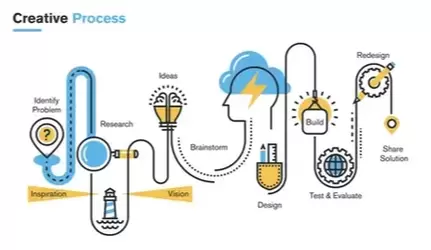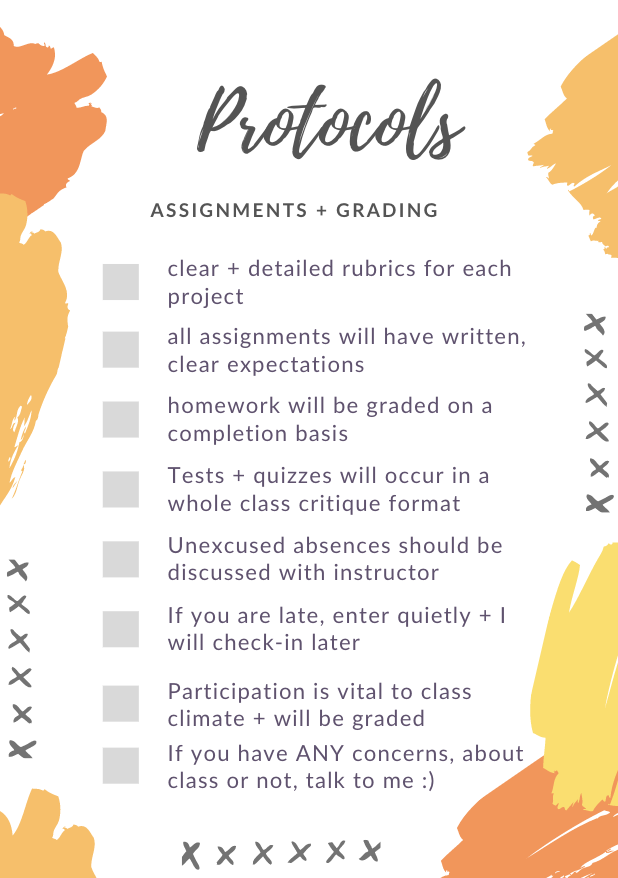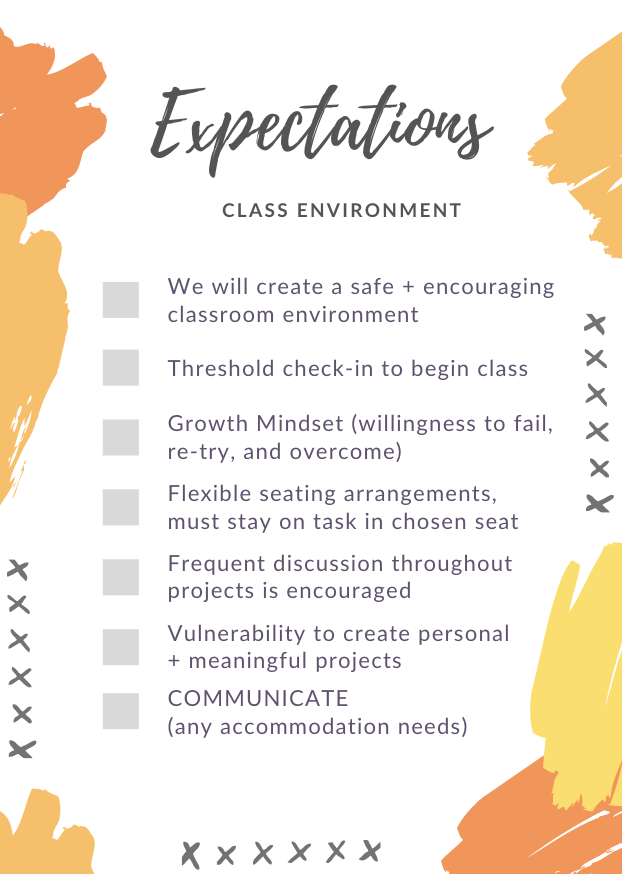Importance of Teaching art
- Encourages deeper thinking through research, experimentation, and group discussion
- Prompts students to be independent both in ideation + the creative process, which inherently results in the development of the 'self' and strengthening of problem solving skills
- Connection to other content areas within the lesson encourages students to think about practical applications and real-world associations where art can be beneficial/impactful
- Teaches students how to ask questions and advocate for themselves/others/their education
- Forms connections between students through visual language creating a community of kind, confident, + empathetic individuals
Making Learning Meaningful
- Providing opportunities for student choice, ultimately this makes the project more meaningful and successful (all projects should differ in some way, each result is unique and personal to each individual student)
- Introducing projects which are accompanied by some form of context or research which allows for students to make connections to processes and examples from history (Ex: Egyptian Unit, Presentation: "Mummies, Tombs, and the Afterlife", Project: Personal Narrative Fresco)
- Connect projects and historical information to modern day applications and content areas (Ex: Drawing class, Presentation: "Understanding + Using Perspective in Drawing", Connection: creation of inventions (Da Vinci), creation of architecture, understanding the connection between mathematics and art, using both "right brain" and "left brain" to trick our hand into drawing what the object truly is and not how it is initially perceived)
- Communicate the practical applications across the board--creativity is vital in a variety of careers and applications of design + creativity are visible at all points of the day (the package your bagels come in was designed by someone, the logo on your car AND your car were created by a designer, the illustrations in your textbooks were made by an artist, the layout of your home was created by an architect/designer etc.)
- Checking in with students throughout the creative process to ensure they feel supported and capable of taking risks and making choices for the betterment of the piece (instilling confidence in students)
- Incorporating examples which promote diversity and individuality; artists of all gender identities and ethnicities
DIFFERENTIATION/ACCOMMODATION
- Skeleton notes
- Clear schedule
- Clear expectations/differentiated expectations
- Guided creative process (providing extra prompts/support)
- Alternative art making materials
- One-on-one conversations/check-ins
SAFETY + MANAGEMENT
- Clear + stated expectations
- Building a community where students feel safe
- Proper cleaning practices (based on COVID-19 regulations)
- Distribution of needed materials + accommodations when necessary
CREATING A COMMUNITY
- Inclusive environment - gender, sexual orientation, political views, etc.
- ALL individuals are important + special
- Individual conversations with students to get to know them
- Being vulnerable, allowing your students to know you on a genuine/real level
- Reading the room + seeing change in students' mood



